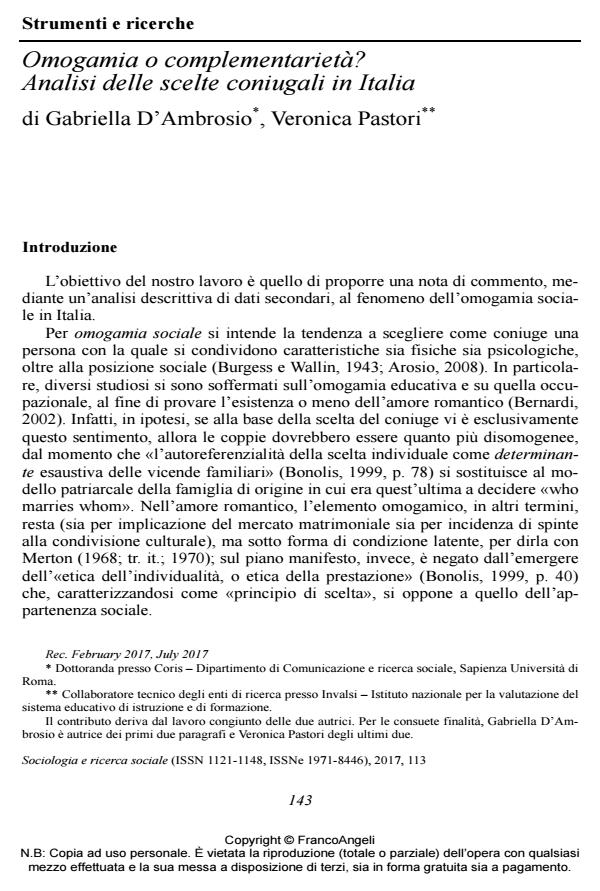Omogamia o complementarietà? Analisi delle scelte coniugali in Italia
Journal title SOCIOLOGIA E RICERCA SOCIALE
Author/s Gabriella D’Ambrosio, Veronica Pastori
Publishing Year 2017 Issue 2017/113
Language Italian Pages 13 P. 143-155 File size 169 KB
DOI 10.3280/SR2017-113007
DOI is like a bar code for intellectual property: to have more infomation
click here
Below, you can see the article first page
If you want to buy this article in PDF format, you can do it, following the instructions to buy download credits

FrancoAngeli is member of Publishers International Linking Association, Inc (PILA), a not-for-profit association which run the CrossRef service enabling links to and from online scholarly content.
- „Nie wyszłabym za jakiegoś malarza ściennego, prawda?” Klasowe mechanizmy wyboru małżonka w polskiej klasie wyższej Gabriela Kamecka, in Przegląd Socjologii Jakościowej /2023 pp.228
DOI: 10.18778/1733-8069.19.4.10
Gabriella D’Ambrosio, Veronica Pastori, Omogamia o complementarietà? Analisi delle scelte coniugali in Italia in "SOCIOLOGIA E RICERCA SOCIALE " 113/2017, pp 143-155, DOI: 10.3280/SR2017-113007